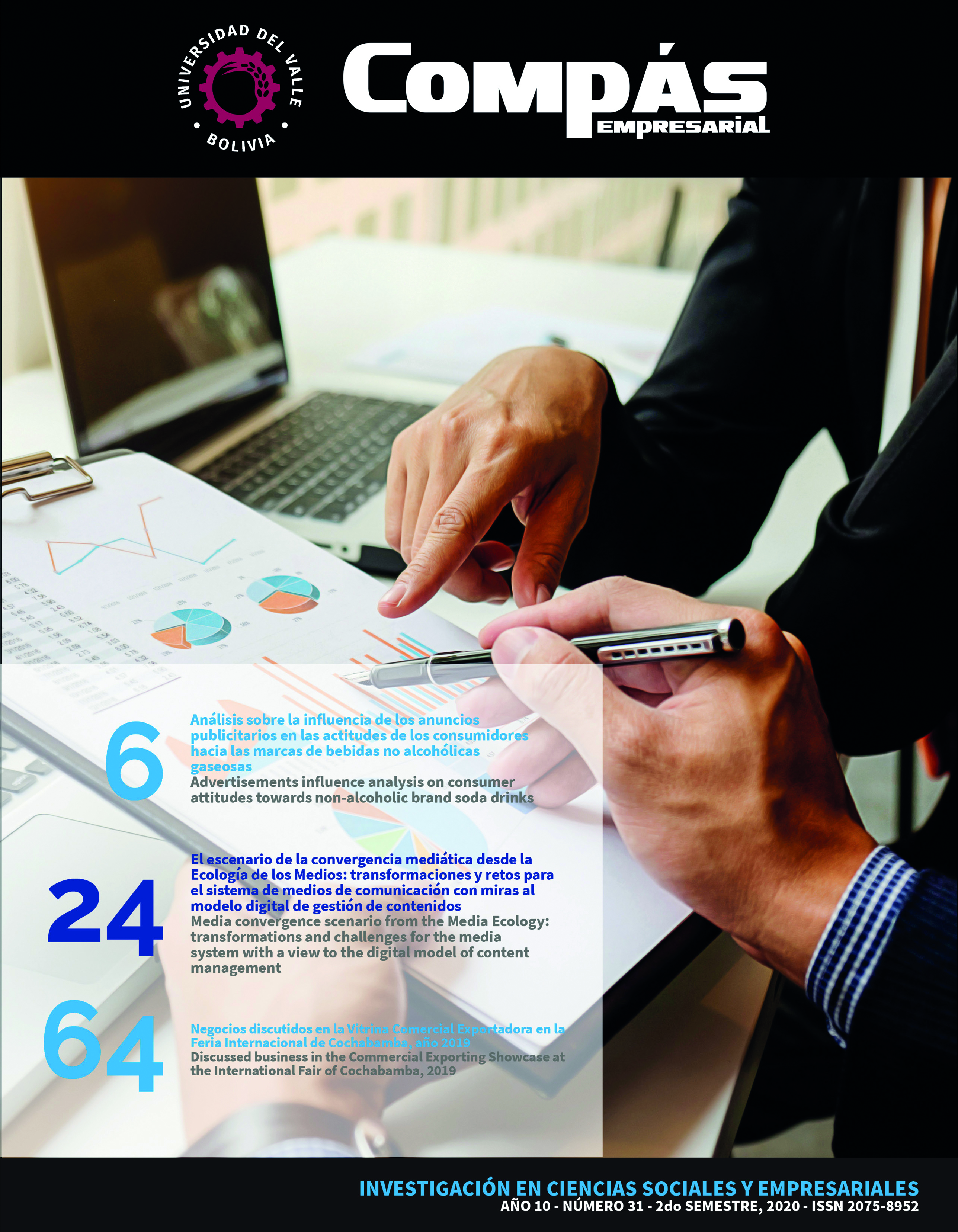Media convergence scenario from the Media Ecology: transformations and challenges for the media system with a view to the digital model of content management
DOI:
https://doi.org/10.52428/20758960.v10i31.81Keywords:
Comunicación digital. Convergencia mediática. Ecología de los Medios. Sistema de medios de comunicación en Cochabamba.Abstract
This paper develops an approach to the changing panorama of the mass media and its processes of convergence towards the multi-support and multi-content digital model. In this framework, it tries to describe the great stylistic and format transformations that have taken place in this migration to the Internet scenarios, and has also generated the change of languages, genres and sub-genres that have changed the way of managing mass media content. A conceptual framework was developed and concluded with an analysis of the adaptation process to the digital scene of the media in the department of Cochabamba-Bolivia, and its strategies to insert itself in the process of becoming digital with little success.
Downloads
References
Agencia de Gobierno Electrónico y Tecnologías de Información y Comunicación (AGETIC) (2018). Estado TIC. Estado de las Tecnologías de Información y Comunicación en el Estado Plurinacional de Bolivia. La Paz: AGETIC. Recuperado de https://agetic.gob.bo/pdf/estadotic/AGETIC-Estado-TIC.pdf
Castells, M (2000). The information Age. Economy, society and Culture. 8va edición. Madrid: Editorial Alianza.
Infotecarios.com (2020) Modelo transmedia de contenidos https://www.google.com/url?sa=i&url=https%3A%2F%2Ftransmedialab.es%2Fdefinicion-transmedia%2F&psig=AOvVaw1B9aEnUYp5b72hB1czuQOD&ust=1592863459825
Islas, O. (Diciembre de 2015). La ecología de los medios: metadisciplina compleja y sistémica, en.Palabra Clave, 18 (4), 1057-1083. DOI: https://10.5294/pacla.2015.18.4.5 DOI: https://doi.org/10.5294/pacla.2015.18.4.5
Jenkins, H. (2008). La cultura de la convergencia New York. Madrid: Paidós.
Lozano Rendon, J. C. (2007). El imperialismo Cultural en la comunicación internacional. Ciudad de México: México Pearsons Education.
Renó, D. R. (2013). Narrativa Transmedia y Mapas Interactivos. Periodismo, Razòn y Palabra, 1.
Ruiz, S. (2012). Reflexiones sobre periodismo ciudadano y narrativa transmedia. In Renó D., Campalans C., & Gosciola V. (Authors), Narrativas transmedia. Entre teorías y prácticas (pp. 49-68). Editorial Universidad del Rosario. Retrievedfrom http://www.jstor.org/stable/j.ctt1b347xf.8
Scolari, C. (2013). Narrativas transmedia, cuando todos los medios cuentan. Barcelona: Centro Libros, S.l.U.
Scolari, C. (2015). Hipermediaciones, elementos para una teoría de la Comunicación digital. Barcelona: Gedisa.
Downloads
Published
How to Cite
Issue
Section
License
Copyright (c) 2021 Mabel Rocío Zabaleta Mercado, Tatiana Patricia Rojas Fernández

This work is licensed under a Creative Commons Attribution 4.0 International License.
Authors who publish with this journal agree to the following terms:
- Authors retain copyright and grant the journal right of first publication with the work simultaneously licensed under a Creative Commons Attribution License 4.0 that allows others to share the work with an acknowledgement of the work's authorship and initial publication in this journal.
- Authors are able to enter into separate, additional contractual arrangements for the non-exclusive distribution of the journal's published version of the work (e.g., post it to an institutional repository or publish it in a book), with an acknowledgement of its initial publication in this journal.
- Authors are permitted and encouraged to post their work online (e.g., in institutional repositories or on their website) prior to and during the submission process, as it can lead to productive exchanges, as well as earlier and greater citation of published work.










